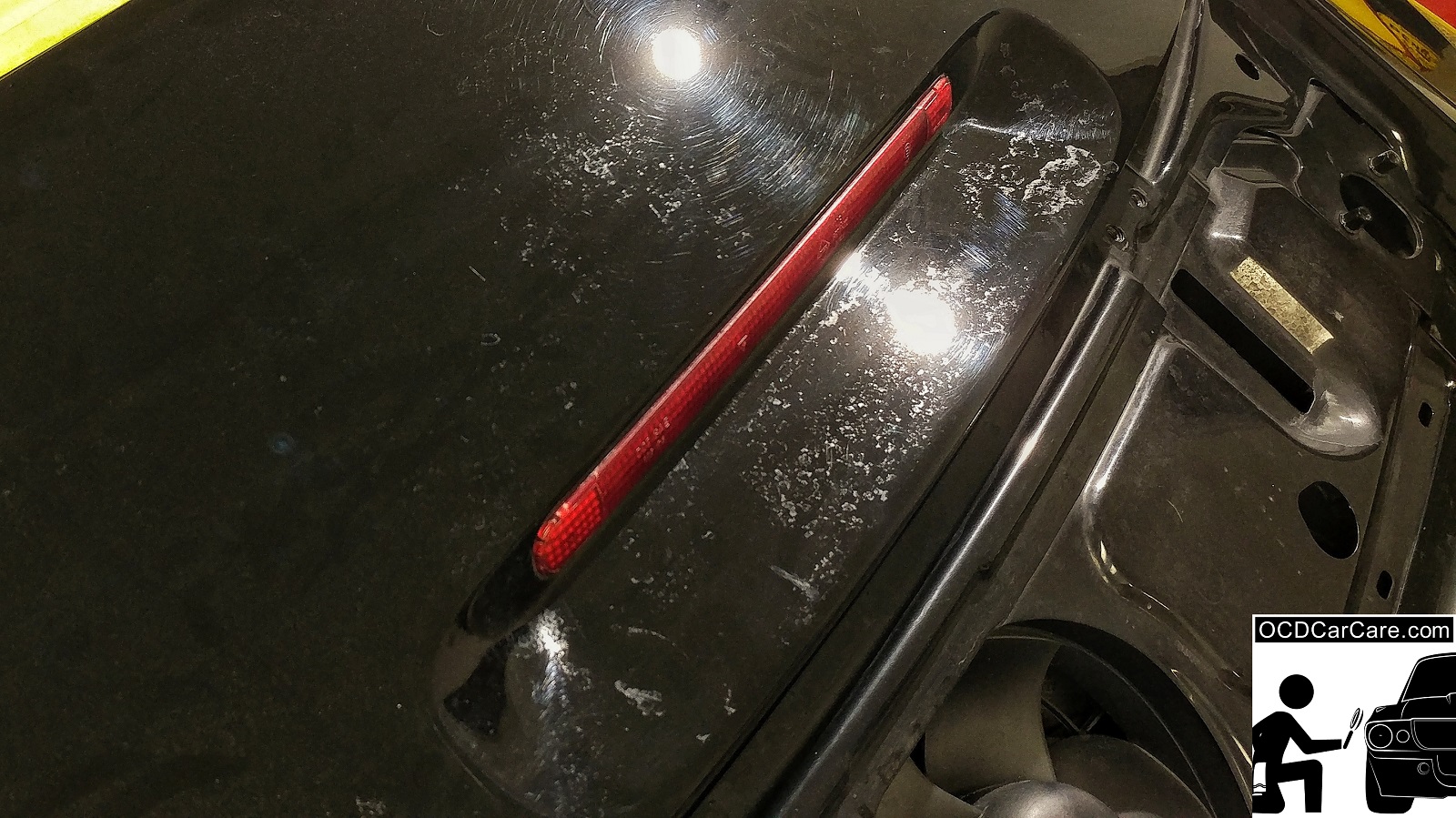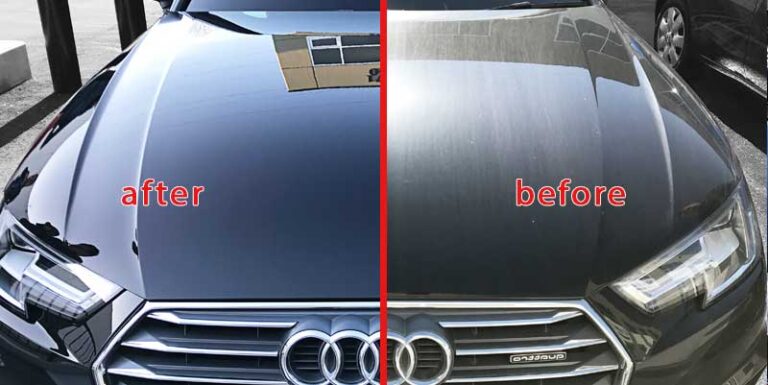Long-Term Outcomes with Expert Ceramic Coating Philadelphia Applications
Long-Term Outcomes with Expert Ceramic Coating Philadelphia Applications
Blog Article
Why Ceramic Coating Is the Ultimate Option for a Flawless Finish
Ceramic layer has actually emerged as a leading option for those looking for a remarkable surface for their cars, thanks to its exceptional durability and safety features. This advanced fluid polymer not only bonds flawlessly with manufacturing facility paint but likewise uses a formidable barrier versus typical threats such as scrapes, UV rays, and toxic wastes. Furthermore, its hydrophobic residential or commercial properties streamline upkeep while enhancing aesthetic charm. Recognizing just how this technology compares to traditional methods and exploring its application subtleties can disclose also more concerning its value. What elements really set ceramic covering apart?
What Is Ceramic Covering?

When applied properly, ceramic covering develops a hydrophobic surface area that fends off water and dust, making it less complicated to preserve and clean. Unlike typical waxes or sealants, which commonly provide brief defense, ceramic layers can last for several years, depending on the product quality and application technique. The procedure of using ceramic coating calls for careful prep work, consisting of detailed cleansing and occasionally paint correction, to ensure optimal bonding and efficiency.
Ceramic finishes are not limited to automobile surfaces; they can likewise be utilized on different materials, consisting of glass, steel, and plastics, giving a functional solution for improving defense. On the whole, ceramic layer represents a significant development in surface security innovation, combining both functional and visual advantages for a wide variety of applications.
Advantages of Ceramic Covering
While numerous surface area security options exist, the benefits of ceramic covering stand out because of its one-of-a-kind homes and durable efficiency. Among the main benefits is its phenomenal longevity. Ceramic Coating Philadelphia. Unlike conventional wax or sealers that need constant reapplication, ceramic layers offer a resistant layer that can last for a number of years, considerably decreasing upkeep efforts
One more significant advantage is boosted security against ecological impurities. Ceramic finishes create a hydrophobic surface area that repels water, dirt, and various contaminants, making it less complicated to clean up. This feature not only protects the lorry's appearance however additionally lessens the danger of corrosion and oxidation, particularly in extreme climate problems.
In addition, ceramic layers supply superior resistance to UV rays, protecting against fading and destruction of paint with time. This UV protection is crucial for maintaining the aesthetic worth of vehicles and surfaces subjected to route sunlight.
Additionally, the glossy surface attained with ceramic coating enhances the overall visual charm, offering surfaces a showroom-quality luster. In general, ceramic coatings represent a considerable advancement in surface security modern technology, offering long-lasting advantages that accommodate both visual and practical demands.
How It Functions
Recognizing the scientific research behind ceramic layers exposes just how they provide such exceptional protection and longevity. At its core, a ceramic coating is a fluid polymer that chemically bonds with the lorry's manufacturing facility paint. This bonding develops a protective layer that is both oleophobic and hydrophobic, repelling water, dust, and oil. The primary part of most ceramic finishes is silicon dioxide (SiO2), which is stemmed from quartz. This compound adds to the layer's hardness and resistance to scrapes, UV rays, and ecological contaminants.
The application procedure entails numerous steps, including surface area prep work, which is essential to accomplishing optimum bond. When used, the finishing undertakes a treating procedure, during which it solidifies and forms a semi-permanent bond with the paint surface area. This bond is what differentiates ceramic layers from standard waxes and sealers, giving a longer-lasting safety barrier that can endure for many years.
Moreover, the density of the layer can improve its protective high qualities, making sure that it can endure harsh conditions. Ultimately, the science of ceramic about his coverings incorporates advanced materials with cutting-edge application strategies to deliver an exceptional degree of protection and visual enhancement for lorries.
Contrast With Standard Techniques
When compared to traditional paint security techniques such as sealers and waxes,The benefits of ceramic coverings come to be specifically apparent. Bonuses While waxes provide a short-lived sparkle, normally lasting a few weeks to a couple of months, ceramic layers give a lasting protective layer that can endure for several years. This longevity substantially minimizes the frequency of reapplication, making ceramic finishings a more cost-effective service with time.
Furthermore, typical approaches typically require considerable prep work and multiple applications to attain an adequate degree of defense. In contrast, ceramic finishes bond at a molecular level with the vehicle's surface area, producing a robust shield versus environmental pollutants like UV rays, acid rain, and roadway salts. This bond improves the automobile's resistance to scratches and swirl marks, which are widespread with traditional waxes and sealants.
Additionally, the hydrophobic residential or commercial properties of ceramic finishes push back water and dust, causing easier cleaning and upkeep. In comparison, wax and sealant-treated surface areas can bring in crud, requiring more constant washing - Ceramic Coating Philadelphia. Overall, ceramic coverings not only offer superior security but additionally deliver an extra long-lasting and aesthetically appealing finish, developing them as the preferred choice for critical lorry owners
Application and Upkeep Tips

Using a foam applicator, apply the finishing in small sections, complying with the manufacturer's guidelines concerning density and overlap. Permit adequate healing time in between coats, typically 1 day, to make certain appropriate bonding. After application, it is essential to stay clear of exposure to water or rough elements for at the very least a week to permit the layer to fully cure.
For upkeep, wash the car consistently with pH-balanced soaps and stay clear of abrasive products. Touchless cars and truck laundries are advised to reduce damaging. Additionally, making use of a ceramic maintenance spray can enhance the coating's hydrophobic residential properties and long life. Regular examinations for any kind of indications of wear will aid preserve the finishing's honesty and protect that pristine surface.
Verdict
In final thought, ceramic finishing arises as an exceptional choice for attaining a flawless auto surface. By creating a durable bond with manufacturing facility paint, ceramic finish effectively shields against scratches, UV rays, and ecological impurities.

Report this page